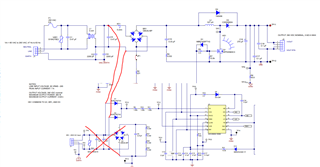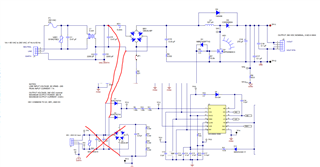Other Parts Discussed in Thread: UCC28180, UCC256301, UCC25630-1EVM-291, , PFCLLCSREVM034
Hello,
I’m designing power supply system using UCC28180 and UCC256301.
I evaluated these products using “UCC28180EVM-573” and “UCC25630-1EVM-291”, but power factor was not corrected. Tested conditions and result are below,
<AC Input>
Supplied 115 V(60 Hz) to “UCC28180EVM-573(J1) and UCC25630-1EVM-291(J1).”
<Connection>
Connected between “UCC28180EVM-573(J3) and UCC25630-1EVM-291(J2,J3)”, and “UCC28180EVM-573(J2) and UCC256301 RVCC out(Pin 12).”
<DC Output>
Connected UCC25630-1EVM-291(J5) to electronic load(constant current).
<Result>
Power factor was about 0.86 maximum.
From the UCC256301 datasheet and other topics of E2E, I found RVCC voltage of UCC256301 is not enough to supply VCC of UCC28180.
So I switched DC input of UCC28180(J2) from RVCC of UCC256301 to 15V DC power supply, but I cannot correct the power factor yet.
Furthermore, an overall power factor fell to 0.6 when I changed the AC input of “UCC28180EVM-573” and “UCC25630-1EVM-291” to 400 Hz.
Will there be the method to improves these power factors? I have no idea to solve this problem.
Best regards.



